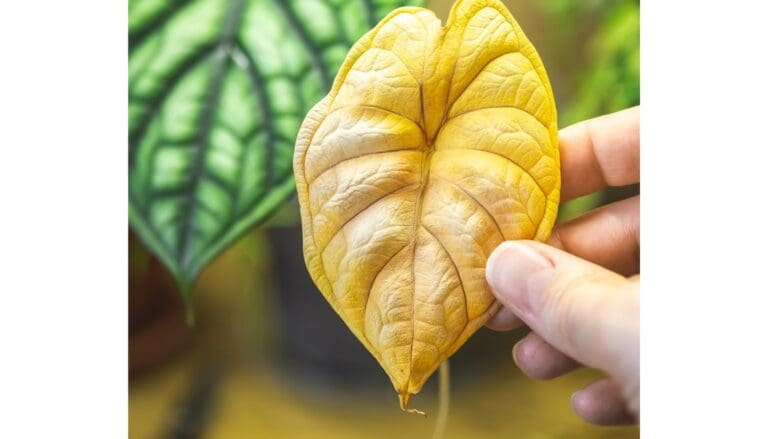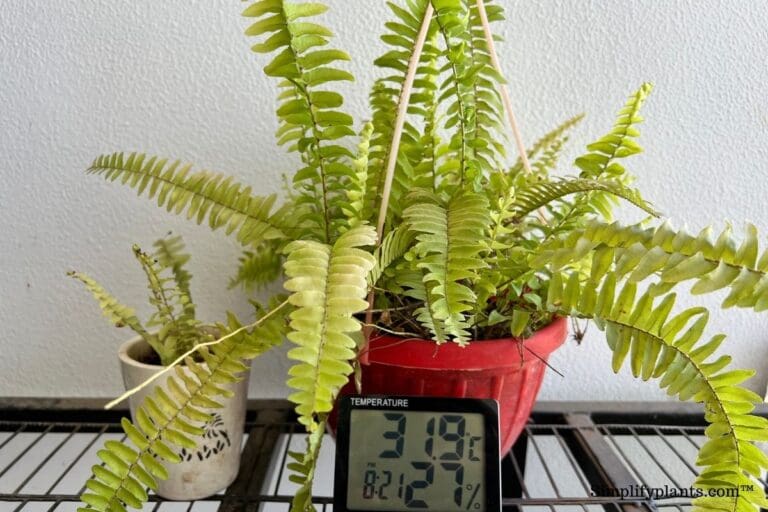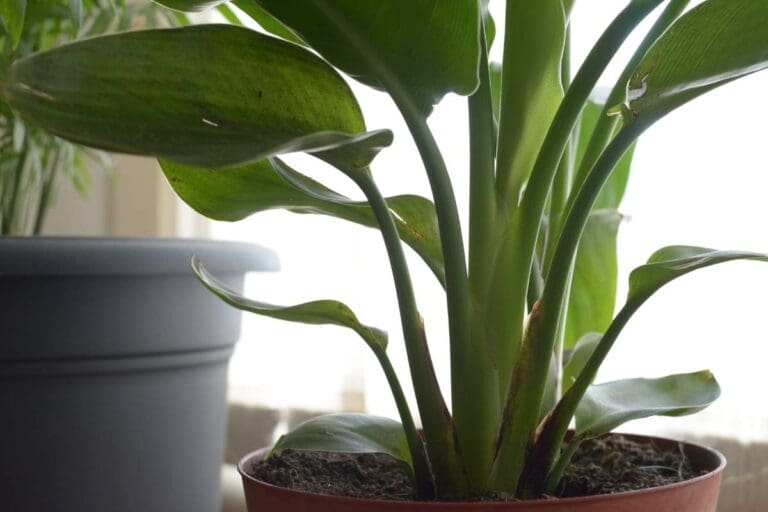9 Reasons Why Your Spider Plant Is Not Producing Babies(+What To Do)
Spider plants, also known as Chlorophytum, are one of the fastest-growing houseplants. You can propagate them through small pups, also known as spider plant babies.
But sometimes, your spider plant doesn’t produce any pups. You must be wondering what’s wrong with your spider plant why it is not producing babies. So, in this article, we shall discuss all about it. So, let’s get started.
Inadequate fertilization, low humidity, underwatering, and poor lighting conditions are primary causes due to which your spider plant might not be producing any babies. Spider pups start coming out in early spring, and you must provide the plant with a balanced environment to ensure the pups’ healthy growth.
If your spider plant is not producing babies, you need to understand what’s wrong with your plant. There is something in their care routine that results in no babies. But what is it? Let’s find out!
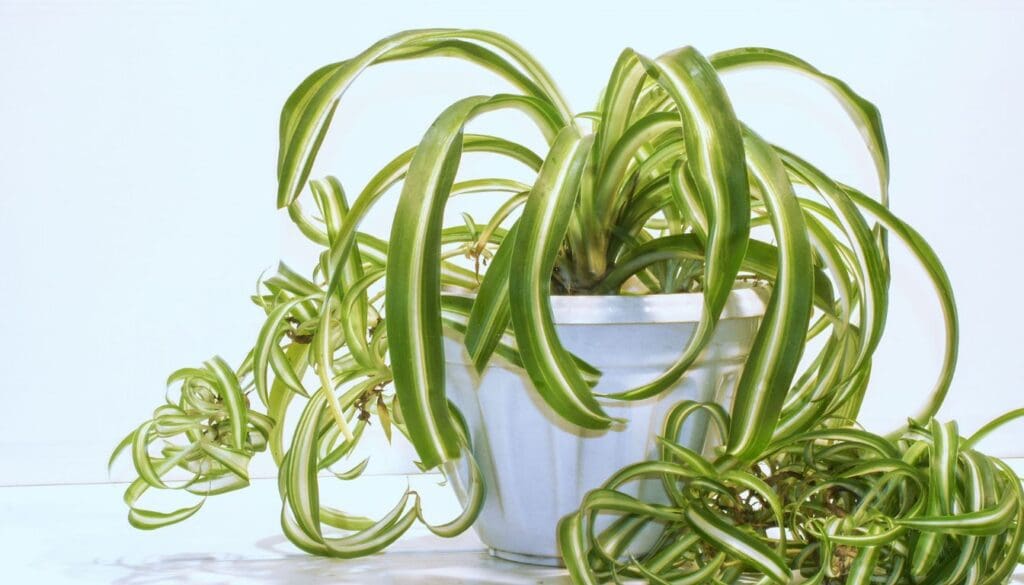
Please note: Simplify Plants is reader-supported. Some links in the post are affiliate links and I get a commission from purchases made through links in the post.
Why do some spider plants not have babies?
If your spider plant isn’t growing pups, then there could be many reasons behind this.
Unhappy and stressed plants face problems producing babies, or your plant may not be old enough, the plant isn’t getting ample nutrients, and many more.
Let’s discuss them in detail with solutions.
Age of the plant
Not only humans but plants also have to exceed a particular age before they could be able to produce babies.
It makes no sense to expect an under-aged spider plant to produce pups as they themselves are in their growing stage.
Your plant must be at least approximately one year old to produce babies. In case of inappropriate caring, it may take a little longer while under proper care; they can produce babies a bit early.
If your plant is qualified to count as a mature plant, then you can move on to the next probable reason.
Inadequate fertilization
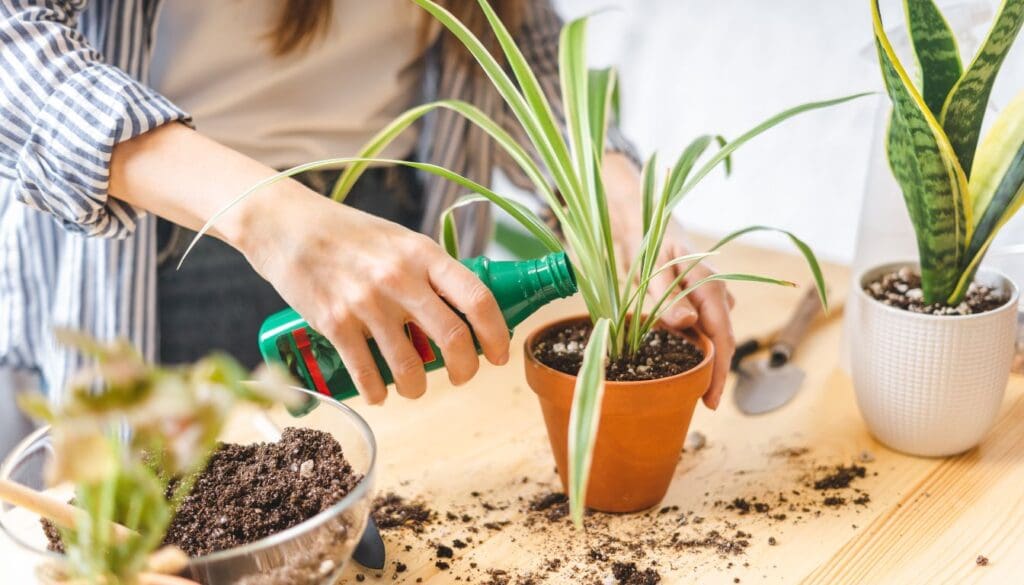
Fertilizer is the crucial factor that plays a significant role in the sustainable growth of the spider plant and pups by fulfilling its nutrients deficiency.
Yet, it is essential to track how much fertilizer it requires and how much fertilizer you are providing to your spider plant.
Over fertilizer and Under fertilizer-
A spider plant should be fertilized at least once a month during the spring and summer seasons as it is the growing season of the spider plant.
You may stop fertilizing them for the rest of the year as the plant doesn’t grow significantly.
Suppose you provided an ample amount of fertilizer to your spider plant, yet it is facing any related problem. In that case, I guess it’s time to replace your regular fertilizer with a quality fertilizer.
Quality of fertilizer
Talking about the quality fertilizer and ignoring organic fertilizer? That’s not going to happen.
No doubt, organic fertilizers are way better than inorganic ones because they are free from chemicals that may affect the soil negatively, which will eventually cause the plant to face issues.
The synthetic fertilizer is made up of several chemical processes and is water-soluble. So, the plant consumes the minerals fast; hence issues as over-fertilizing may appear.
Whereas the organic fertilizer is made up of all the natural minerals, it’s not water-soluble. That’s why it takes weeks and even months to release nutrients, which is favorable for the plant.

Now, there are two types of fertilizer-
- Granular and
- Liquid fertilizer
Although, both types of fertilizer contain an equal amount of nutrition in them.
The Granular fertilizer is slow releasing fertilizer, and that’s why it is good to use them during early spring as plants don’t need much fertilizer during this time.
But the liquid fertilizer is consumed fast by the plant, and Hence, it is best to use liquid fertilizer in the growing season (i.e., late spring and summer season).
Remember that fertilizer fulfills the number of nutrients that soil lacks; hence, plants will get enough food to boost the plants’ ability to grow pups.
Signs Of Over-fertilizing: If the plant’s getting crispy edges, it’s the symptom of over-fertilizing, which causes the leaves to turn brown or sometimes black.
Signs Of Under-fertilizing: The faded color of leaves, drooping and slow growth, or no growth can be the effects of under-fertilizing. In the worst-case scenario, the plant stops thriving and growing further.
Also read: Do spider plant need fertilizer? How much?
Temperature around the plant
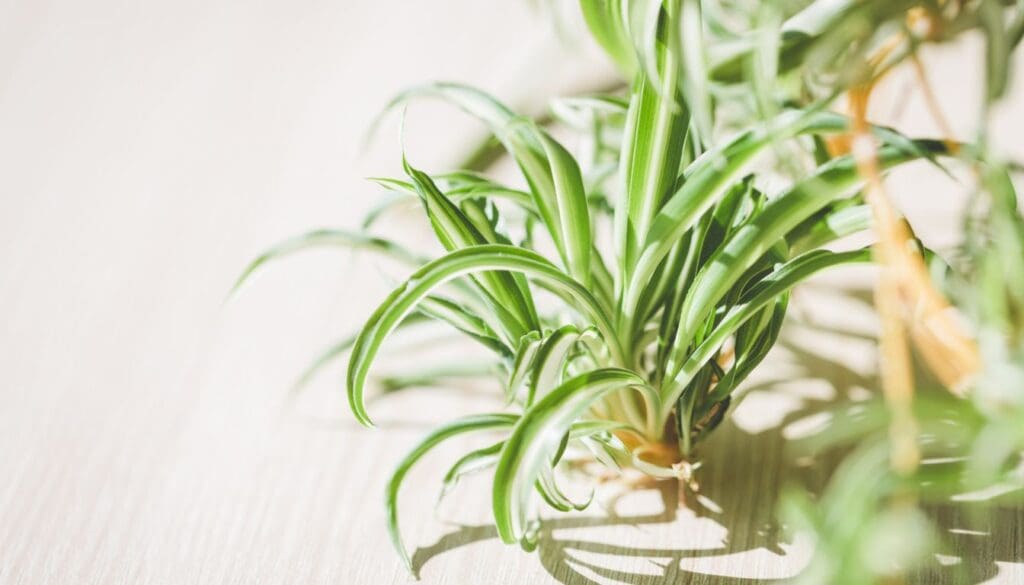
Generally, spider plants prefer room temperature (i.e., 68°F – 72°F) for proper growth. So, if it isn’t getting the required temperature, then it might be the reason for not producing babies.
The summer season is considered the growth season for the spider plant because they prefer warm temperatures.
However, if the temperature is above 72°F, in that case, it is recommended to keep your spider plant indoors and away from the sun as the extreme heat can cause leaf burn and other damage to the spider plant, eventually creating difficulty in producing babies.
Lighting requirements

Talking about light, spider plants need bright indirect light, not only to survive but to produce babies too.
Spider plants can be kept outdoors during summer but only under two conditions.
- Firstly, they thrive in warm temperature, so the temperature should be consistently between 65°F to 72°F and,
- Secondly, they need to be kept under a shady spot if kept outdoors (as spider plant are quite uncomfortable under direct sunlight exposure and may cause issues like leaf burning and brown tips)
They can be placed on a window sill to get maximum indirect sunlight during winters. Just don’t take it outside, as the low temperature can introduce new problems to the spider plant.
Artificial light can be a substitute in the absence of natural light. But keep in mind that light must be bright enough to satisfy the plant; otherwise, it won’t survive for too long. Lack of good lighting can prevent the growth of spider pups in the plant.
Also read: Light requirement of spider plant and placement tips
Size of the pot
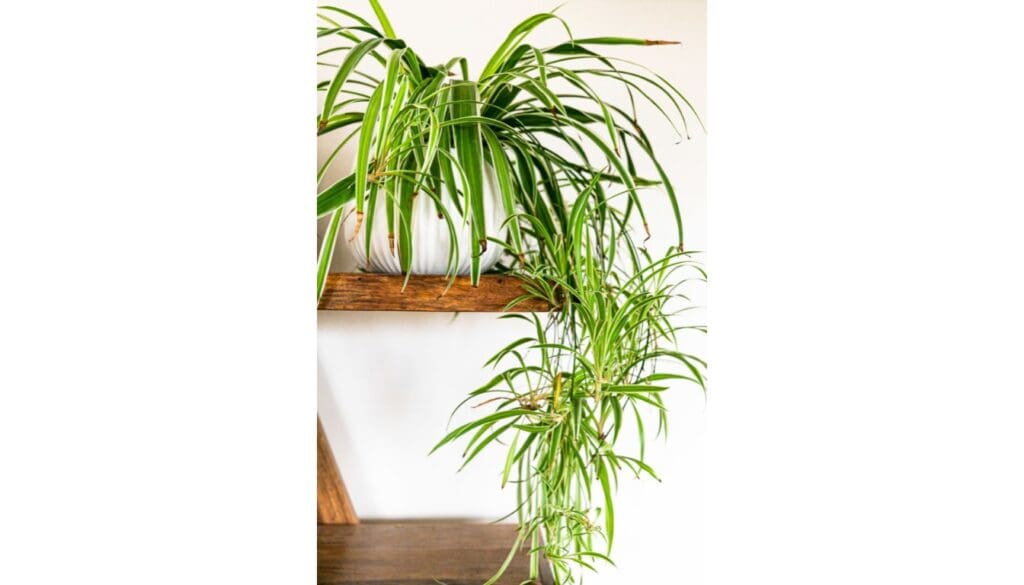
Spider plants show insane growth if cared for properly; hence they become pot-bound sooner.
Well, you will be surprised to know that the wrong pot size could be the reason behind your plant not producing babies.
Repot the spider plant every other year. It will give enough space for the spider plant and pups to grow.
Also, the container should have sound drainage capability.
A perfect pot or container is supposed to be 30% bigger than the plant. Spider plants root grows very fast.
A smaller pot than this size can provide less space for the roots to grow, while a bigger pot sizer will make the plant use the majority of its energy to grow the roots as wide as the container. This will cause a deficiency of nutrients in the plant and make the plant unable to produce babies.
Also, it is preferred to purchase good quality potting soil over garden soil whenever repotting the spider plant. The typical garden soil may cause many issues to the plant, and pests attack is most common among them.
Also read: Does spider plant likes to be root bound?
Watering problems
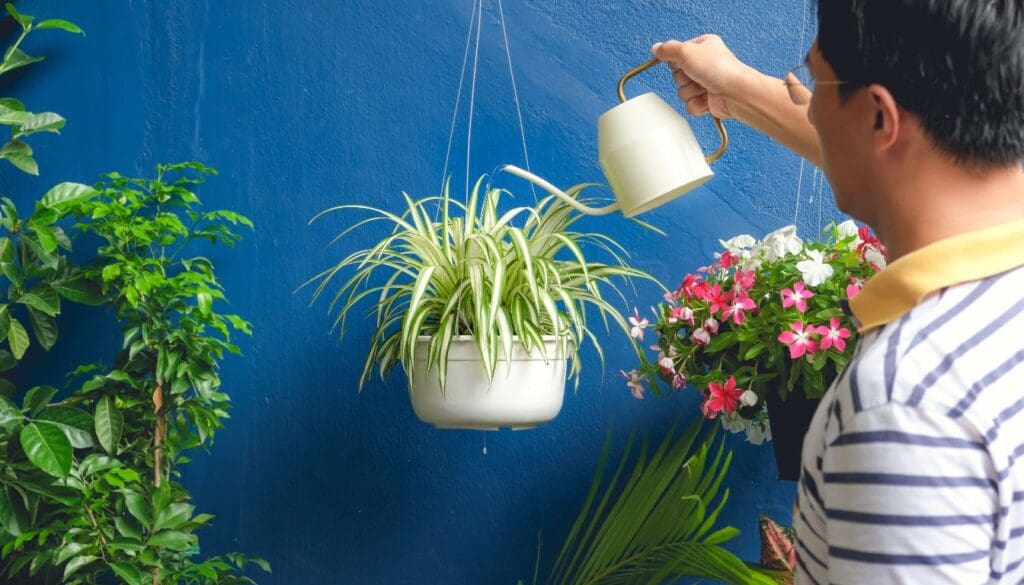
Generally, tap water contains chloride, fluoride in it. Spider plants are sensitive to fluoridated tap water and water high in soluble salts.
Rainwater and purified water are the best water sources that help spider plants and all the other plants to get optimum growth.
If you can’t purify water or aren’t willing to purchase distilled water, then let the tap water sit at room temperature overnight before pouring it into your spider plant.
Overwatering and under watering
Whenever you water a spider plant, know the limits. Don’t make the soil soggy. It can cause root rot. Also, underwatering can cause water deficiency which causes plant weakening and difficulty in producing babies.
The amount of water your spider plant requires depends upon several factors such as your plant’s size, the season, the stage of growth, type of soil, and many more.
However, Spider plants usually don’t require too much water. Once a week is enough. Just make sure before watering the plant again, you must check the moisture of the soil.
If the top few inches are dry, you can water it, and if the water is moist, you should wait for a few days.
Signs of under watering: An underwatered spider plant shows symptoms like drooping or wilting and brown tips.
Signs of overwatering: Yellowing of leaves, soggy soil, and fungus growth on the base of plants are the significant symptoms of overwatering.
Also read: Overwatering vs Under-watering
Dryness

Many people get confused and stuck between the overwatering and underwatering issues. Because they figure out that overwatering is more dangerous than under watering, they end up drying their plant.
Other times, it’s the dry climate or excessive heat that causes the plant to get dry.
A simple solution for both situations is to keep moistening the spider plant frequently as they can’t tolerate the dry conditions for too long.
Dryness causes your plant to feel stressed, and a stressed plant can’t even grow itself, so it’s a drag to expect the plant to produce babies.
Misting the spider plant twice a week sounds good enough to make the plant happy and stress-free. You can also use a humidifier to help with the dry weather.
Also read: Should I mist my spider plant?
Wilting
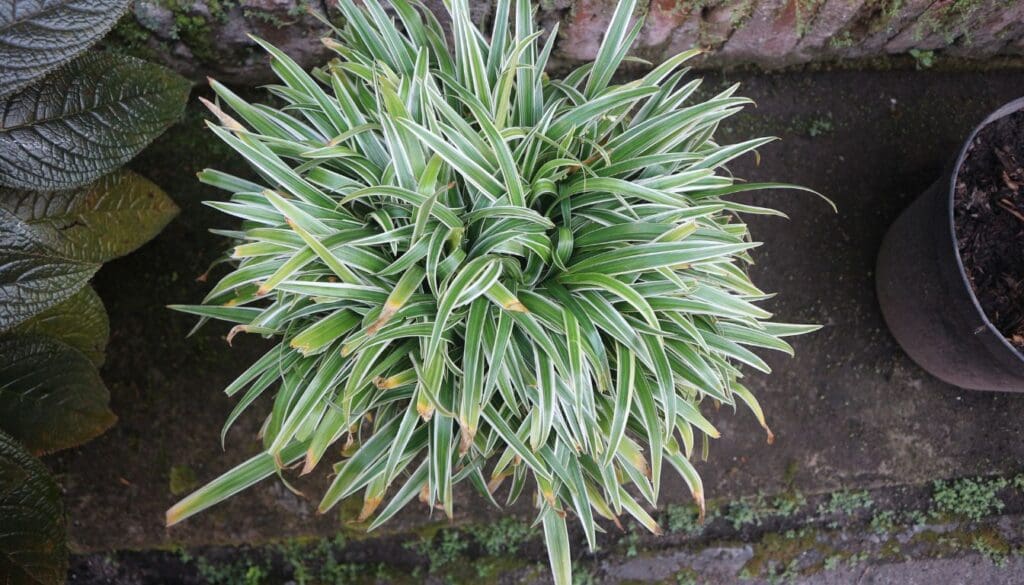
Improper care of spider plants often ends up causing problems like wilting and drooping. Once some of the leaves start wilting, it’s now or never a situation to start caring for the plant.
Start with removing the wilted leaves from the spider plant as they can’t be helped. There is no cure to revive the completely wilted leaf, and hence it’s better to trim it down with a sharp pair of scissors.
And don’t worry, once it will start getting some healthy new leaf once again, it will grow pups, and it kind of likes giving your plant a fresh new start.
Here are a few quick tips to avoid the chances of wilting in the future:
1. Lack of water: Underwatering cause the plant to gets dry from the inside, and it affects the plant negatively, causing wilting and drooping of leaves
2. Condition of soil: Poorly drained soil is an unacceptable condition for a plant to stay healthy. If such circumstances appear, consider changing the soil.
3. Direct Sunlight: Direct sunlight also causes the spider plant leaves to wilt. We have already mentioned this point above in this article so that we won’t go more in-depth here again. Still, the whole point is direct sunlight exposure is only going to make your spider plant suffer various problems, and wilting is one of them.
4. Whenever you purchase a new spider plant from a nursery, it often looks depressed for some days or even weeks as the plant isn’t accustomed to the environment yet and ain’t getting the care given to him in the nursery. And hence, it takes time to get adopted to this change.
Try every caring method to make the plant get comfortable and familiar with the new surrounding. Ignorance can cause wilting, and eventually, it is never going to produce babies.
5. Pest attack causes wilting and stops the plant from growing pups by damaging the plant. To eliminate pest attacks, it’s essential to use a pesticide on your plant timely and under the proper guidance.
So now, we end up discussing the most critical factors that might be making problems for your spider plant from producing babies.
Now one last thing to remember is that spider plants generally produce pups in the spring season. If you are worried and expecting the plant to grow pups during winters, don’t rush and wait for spring.
If your spider plant didn’t grow babies for some years, follow the above guidelines, and your spider plant will indeed produce babies from next spring.
Also read: How to care for spider plant in winter?
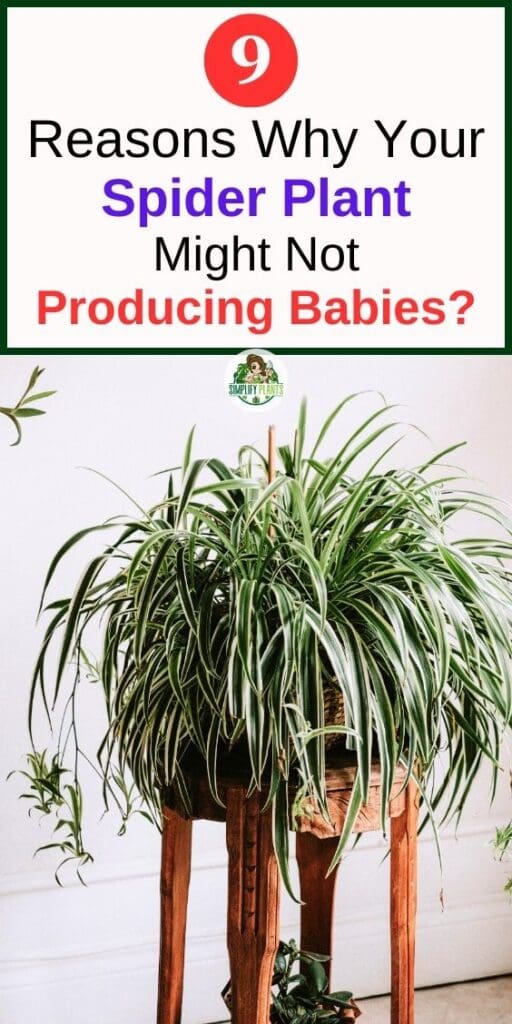
Source: Common insect pests and diseases, Spider Plants Introduction, Spider plant care, National science foundation.
Recommended Garden Supplies
| Product Image | Our Recommended Gardening Supplies | Check Offers! |
|---|---|---|
Top Top
Top
Top
Top
Top
Top
Top
Top | rePotme Houseplant and Tropical Classic Potting Soil Mix | Check Offer On Amazon |
 Top
Top
Top
Top
Top
Top
Top
Top | Espoma Organic Indoor Plant Food | Check Offer On Amazon |
 Top
Top
Top
Top
Top
Top
Top
Top | GooingTop LED Grow Light 6000K Full Spectrum Clip Plant Growing Lamp | Check Offer On Amazon |
 Top
Top
Top
Top
Top
Top
Top
Top | Soil Moisture Meter | Check Offer On Amazon |
 Top
Top
Top
Top
Top
Top
Top
Top | Govee Hygrometer Thermometer, Bluetooth Enabled! | Check Offer On Amazon |
 Top
Top | LEVOIT Humidifiers for Large Room(Best For Plants) | Check Offer On Amazon |
 Top
Top
Top
Top
Top
Top
Top
Top | Upgraded DIY Automatic Drip Irrigation Kit, 15 Potted Houseplants Support | Check Offer On Amazon |
 Top
Top
Top
Top
Top
Top
Top
Top | Stainless Steel Heavy Duty Gardening Tool Set | Check Offer On Amazon |
 Top
Top
Top
Top
Top
Top
Top
Top | Bonide Insecticidal Soap | Check Offer On Amazon |
 Top
Top
Top
Top
Top
Top
Top
Top | Bonide 32 oz Spray Neem Oil for Organic Gardening | Check Offer On Amazon |
 Top
Top
Top
Top
Top
Top
Top
Top | Garden Safe Fungicide | Check Offer On Amazon |

